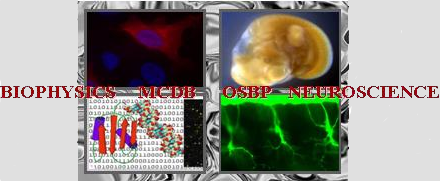Poster abstracts
Poster number 42 submitted by Joe Kanlong
Investigating the mechanism by which translation of HIV-1 unspliced RNA is regulated through RNA structure
Joseph G. Kanlong (Ohio State Biochemistry Program, Center for Retrovirus Research, Center for RNA Biology, The Ohio State University, Columbus OH), Zetao Cheng, Saiful Islam, Olga A. Nikolaitchik, Wei-Shau Hu (Viral Recombination Section, HIV DRP, NCI, Frederick, MD), Crystal Stackhouse, Joseph D. Puglisi, Elisabetta Viani Puglisi, (Department of Structural Biology, Stanford University School of Medicine, Stanford, CA), Vinay K. Pathak (Viral Mutation Section, HIV DRP, NCI, Frederick, MD), Michael G. Kearse (Department of Biological Chemistry and Pharmacology, Center for RNA Biology, The Ohio State University, Columbus OH), Madeline Sheppard, Heewon Seo, Karin Musier-Forsyth (Department of Chemistry and Biochemistry, Center for Retrovirus Research, Center for RNA Biology, The Ohio State University, Columbus OH)
Abstract:
The 9.2 kb Human Immunodeficiency Virus type 1 (HIV-1) unspliced viral RNA serves a dual purpose; it functions as the viral genome, packaged into new viral particles as a dimer, and as the mRNA template for the synthesis of the essential structural proteins Gag and Gag-Pol. During transcription of HIV-1 RNA by host cell RNA polymerase II, various transcription start sites are used resulting in heterogeneous RNAs containing either one (1G), two, or three (3G) 5ʹ guanosines and a modified 5ʹ cap. Despite 3G being the predominant species in the cell, 1G is selectively packaged as genomic RNA (gRNA). We have previously shown that the 5ʹ UTR of 1G RNAs adopt distinct conformational ensembles that favor selective packaging by exposing structural elements required for efficient gRNA dimerization, Gag binding, and Gag multimerization. Additionally, mutations that eliminate structural differences between the 1G and 3G 5ʹ UTR abolish selective 1G packaging. Recently, we reported that while both 1G and 3G RNAs can be translated, 3G RNAs are translated more efficiently in vitro and in cells; translation efficiency of HIV-1 unspliced RNA is dependent on 5ʹ UTR conformation. In vitro assays also indicated that both the 1G and 3G 5ʹ UTR structures are generally inhibitory to translation when compared to unstructured controls, consistent with a requirement for additional host factors in cells. While we have shown that these two species of RNA are translated with varying efficiencies, the underlying mechanisms that govern HIV-1 translation initiation are not well understood. Electrophoretic mobility shift assays and single-molecule FRET experiments revealed that both 1G and 3G RNAs are bound and unwound similarly by eukaryotic initiation factor 4F, the heterotrimeric complex responsible for mRNA activation, and load 43S ribosomes with similar efficiencies. Ongoing work is designed to test the hypothesis that distinct 5ʹ UTR conformational ensembles result in altered host factor interactions, ribosome scanning efficiencies, and distinct ribosome profiles.
Keywords: HIV-1, Translation, RNA structure
